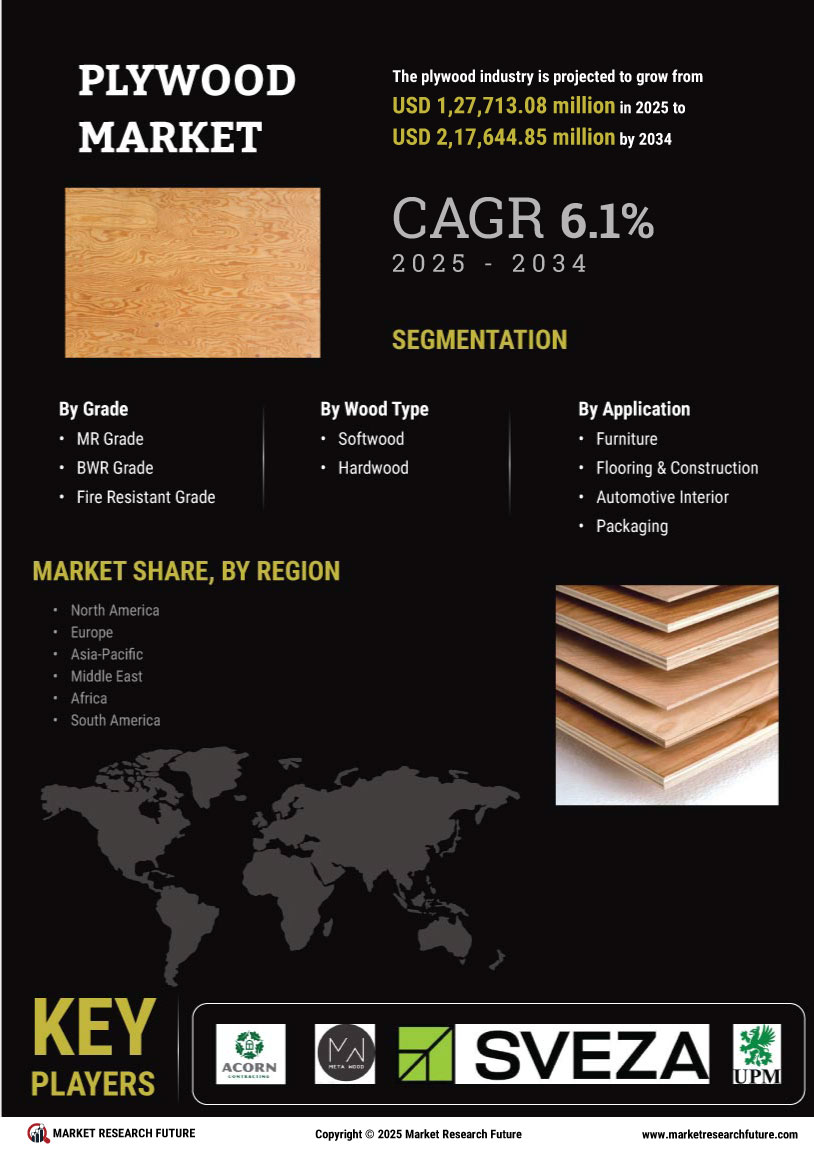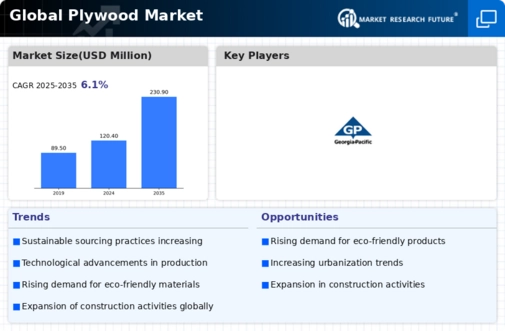Market Growth Projections
The Global Plywood Market Industry is projected to experience substantial growth, with estimates indicating a market value of 230.9 USD Billion by 2035. This growth trajectory is supported by various factors, including rising construction activities, increasing demand from the furniture sector, and technological advancements in production processes. The anticipated CAGR of 6.1% from 2025 to 2035 further underscores the industry's potential for expansion. Market dynamics suggest that plywood will continue to play a crucial role in multiple sectors, reinforcing its position as a preferred material in both residential and commercial applications.
Rising Construction Activities
The Global Plywood Market Industry experiences a notable surge due to increasing construction activities worldwide. As urbanization accelerates, particularly in developing nations, the demand for plywood in residential and commercial projects rises. In 2024, the market is valued at approximately 120.4 USD Billion, reflecting the industry's robust growth. Plywood Market serves as a preferred material for flooring, roofing, and wall sheathing, owing to its strength and versatility. The construction sector's expansion, driven by government initiatives and private investments, suggests a sustained upward trajectory for plywood consumption, indicating its integral role in modern architecture.
Sustainable Building Practices
The Global Plywood Market Industry is significantly influenced by the growing emphasis on sustainable building practices. As environmental concerns gain prominence, builders and architects increasingly prefer plywood due to its renewable nature and lower carbon footprint compared to alternative materials. This shift towards eco-friendly construction is evident in various regions, where regulations encourage the use of sustainable materials. The market's projected growth, with a CAGR of 6.1% from 2025 to 2035, underscores the potential for plywood as a sustainable choice in the construction industry. This trend not only aligns with global sustainability goals but also enhances the market's appeal to environmentally conscious consumers.
Expansion of Automotive Applications
The Global Plywood Market Industry is witnessing an expansion in automotive applications, where plywood is increasingly utilized for interior components and lightweight structures. The automotive sector's focus on reducing vehicle weight to improve fuel efficiency aligns with plywood's lightweight properties. As manufacturers seek sustainable alternatives to traditional materials, plywood emerges as a viable option for interior panels and other components. This trend suggests a diversification of plywood applications beyond construction and furniture, potentially driving market growth. The integration of plywood in automotive design reflects the industry's adaptability and responsiveness to evolving consumer demands.
Growing Demand from Furniture Industry
The Global Plywood Market Industry benefits from the burgeoning demand for plywood in the furniture sector. As consumer preferences shift towards stylish and functional furniture, plywood's versatility and aesthetic appeal make it a favored choice among manufacturers. The rise of e-commerce and online furniture retailing further fuels this demand, as consumers seek customizable and affordable options. The industry's growth trajectory is supported by the increasing value of the furniture market, which is expected to enhance plywood consumption significantly. This trend indicates that the furniture industry's evolution is likely to play a pivotal role in shaping the future of the plywood market.
Technological Advancements in Production
Technological advancements in plywood production processes are reshaping the Global Plywood Market Industry. Innovations such as improved adhesive formulations and advanced manufacturing techniques enhance product quality and durability. These advancements enable manufacturers to produce plywood that meets stringent performance standards, catering to diverse applications in construction and furniture. As a result, the market is poised for growth, with projections indicating a rise to 230.9 USD Billion by 2035. Enhanced production efficiency also contributes to cost reductions, making plywood a more competitive option against alternative materials. This technological evolution appears to be a key driver in sustaining the industry's momentum.

















Leave a Comment